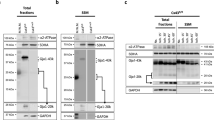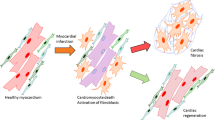Abstract
We have previously reported in the early septating embryonic heart that electromechanical disturbances induced by anoxia-reoxygenation are distinct in atria, ventricle, and outflow tract, and are attenuated in ventricle by opening of mitochondrial KATP (mitoKATP) channels. Here, we assessed the regional activation of mitogen-activated protein kinases (MAPKs) ERK, p38, and JNK in response to anoxia-reoxygenation and H2O2. Hearts isolated from 4-day-old chick embryos were subjected to 30-min anoxia and 60-min reoxygenation or exposed to H2O2 (50 μM–1 mM). The temporal pattern of activation of ERK, p38, and JNK in atria, ventricle, and outflow tract was determined using immunoblotting and/or kinase assay. The effect of the mitoKATP channel opener diazoxide (50 μM) on JNK phosphorylation was also analyzed. Under basal conditions, total ERK and JNK were homogeneously distributed within the heart, whereas total p38 was the lowest in outflow tract. The phosphorylated/total form ratio of each MAPK was similar in all regions. Phosphorylation of ERK increased in atria and ventricle at the end of reoxygenation without change in outflow tract. Phosphorylation of p38 was augmented by anoxia in the three regions, and returned to basal level at the end of reoxygenation except in the outflow tract. JNK activity was not altered by anoxia-reoxygenation in atria and outflow tract. In ventricle, however, the diazoxide-inhibitable peak of JNK activity known to occur during reoxygenation was not accompanied by a change in phosphorylation level. H2O2 over 500 μM impaired cardiac function, phosphorylated ERK in all the regions and p38 in atria and outflow tract, but did not affect JNK phosphorylation. At a critical stage of early cardiogenesis, anoxia, reoxygenation, exogenous H2O2 and opening of mitoKATP channels can subtly modulate ERK, p38, and JNK pathways in a region-specific manner.




Similar content being viewed by others
References
Ostadal B, Ostadalova I, Dhalla NS (1999) Development of cardiac sensitivity to oxygen deficiency: comparative and ontogenetic aspects. Physiol Rev 79:635–659
Raddatz E, Gardier S, Sarre A (2006) Physiopathology of the embryonic heart (with special emphasis on hypoxia and reoxygenation). Ann Cardiol Angeiol (Paris) 55:79–89
Jensen A, Garnier Y, Berger R (1999) Dynamics of fetal circulatory responses to hypoxia and asphyxia. Eur J Obstet Gynecol Reprod Biol 84:155–172
Sharma SK, Lucitti JL, Nordman C, Tinney JP, Tobita K, Keller BB (2005) Impact of hypoxia on early chick embryo growth and cardiovascular function. Pediatr Res 59:116–120
Fowden AL, Giussani DA, Forhead AJ (2006) Intrauterine programming of physiological systems: causes and consequences. Physiology 21:29–37
Ream M, Ray AM, Chandra R, Chikaraishi DM (2008) Early fetal hypoxia leads to growth restriction and myocardial thinning. Am J Physiol Regul Integr Comp Physiol 295:R583–R595
Agata N, Kato Y, Tanaka H, Shigenobu K (1994) Differential effects of hypoxia on electrical and mechanical activities of isolated ventricular muscles from fetal and adult guinea-pigs. Gen Pharmacol 25:15–18
Kasuya Y, Matsuki N, Shigenobu K (1977) Changes in sensitivity to anoxia of the cardiac action potential plateau during chick embryonic development. Dev Biol 58:124–133
Sarre A, Lange N, Kucera P, Raddatz E (2005) mitoKATP channel activation in the postanoxic developing heart protects E-C coupling via NO-, ROS-, and PKC-dependent pathways. Am J Physiol Heart Circ Physiol 288:H1611–H1619
Sarre A, Maury P, Kucera P, Kappenberger L, Raddatz E (2006) Arrhythmogenesis in the developing heart during anoxia-reoxygenation and hypothermia-rewarming: an in vitro model. J Cardiovasc Electrophysiol 17:1350–1359
Raman M, Chen W, Cobb MH (2007) Differential regulation and properties of MAPKs. Oncogene 26:3100–3112
Wang Y (2007) Mitogen-activated protein kinases in heart development and diseases. Circulation 116:1413–1423
Bogoyevitch MA (2000) Signalling via stress-activated mitogen-activated protein kinases in the cardiovascular system. Cardiovasc Res 45:826–842
Liberatore CM, Yutzey KE (2004) MAP kinase activation in avian cardiovascular development. Dev Dyn 230:773–780
Ravingerova T, Barancik M, Strniskova M (2003) Mitogen-activated protein kinases: a new therapeutic target in cardiac pathology. Mol Cell Biochem 247:127–138
Bell RM, Clark JE, Hearse DJ, Shattock MJ (2007) Reperfusion kinase phosphorylation is essential but not sufficient in the mediation of pharmacological preconditioning: characterisation in the bi-phasic profile of early and late protection. Cardiovasc Res 73:153–163
Hausenloy DJ, Yellon DM (2006) Survival kinases in ischemic preconditioning and postconditioning. Cardiovasc Res 70:240–253
Schulz R (2005) A new paradigm: cross talk of protein kinases during reperfusion saves life!. Am J Physiol Heart Circ Physiol 288:H1–H2
Tenhunen O, Soini Y, Ilves M, Rysa J, Tuukkanen J, Serpi R et al (2006) p38 kinase rescues failing myocardium after myocardial infarction: evidence for angiogenic and anti-apoptotic mechanisms. FASEB J 20:1907–1909
Sarre A, Gardier S, Maurer F, Bonny C, Raddatz E (2008) Modulation of the c-Jun N-terminal kinase activity in the embryonic heart in response to anoxia-reoxygenation: involvement of the Ca2+ and mitoKATP channels. Mol Cell Biochem 313:133–138
Romano R, Rochat AC, Kucera P, De Ribaupierre Y, Raddatz E (2001) Oxidative and glycogenolytic capacities within the developing chick heart. Pediatr Res 49:363–372
Moorman AF, Schumacher CA, de Boer PA, Hagoort J, Bezstarosti K, van den Hoff MJ et al (2000) Presence of functional sarcoplasmic reticulum in the developing heart and its confinement to chamber myocardium. Dev Biol 223:279–290
Tenthorey D, de Ribaupierre Y, Kucera P, Raddatz E (1998) Effects of verapamil and ryanodine on activity of the embryonic chick heart during anoxia and reoxygenation. J Cardiovasc Pharmacol 31:195–202
Franco D, Gallego A, Habets PE, Sans-Coma V, Moorman AF (2002) Species-specific differences of myosin content in the developing cardiac chambers of fish, birds, and mammals. Anat Rec 268:27–37
Raddatz E, Thomas AC (2002) Heterogeneity of oxydant stress in the reoxygenated developing heart. J Mol Cell Cardiol 34:A52
Maury P, Sarre A, Terrand J, Rosa A, Kucera P, Kappenberger L et al (2004) Ventricular but not atrial electro-mechanical delay of the embryonic heart is altered by anoxia-reoxygenation and improved by nitric oxide. Mol Cell Biochem 265:141–149
Shrier A, Clay JR (1982) Comparison of the pacemaker properties of chick embryonic atrial and ventricular heart cells. J Membr Biol 69:49–56
Zarubin T, Han J (2005) Activation and signaling of the p38 MAP kinase pathway. Cell Res 15:11–18
Hamburger V, Hamilton H (1951) A series of normal stages in the development of the chick embryo. J Morphol 88:49–92
Larsen CM, Wadt KA, Juhl LF, Andersen HU, Karlsen AE, Su MS et al (1998) Interleukin-1beta-induced rat pancreatic islet nitric oxide synthesis requires both the p38 and extracellular signal-regulated kinase 1/2 mitogen-activated protein kinases. J Biol Chem 273:15294–15300
Martinsen BJ (2005) Reference guide to the stages of chick heart embryology. Dev Dyn 233:1217–1237
Sugishita Y, Leifer DW, Agani F, Watanabe M, Fisher SA (2004) Hypoxia-responsive signaling regulates the apoptosis-dependent remodeling of the embryonic avian cardiac outflow tract. Dev Biol 273:285–296
Barbosky L, Lawrence DK, Karunamuni G, Wikenheiser JC, Doughman YQ, Visconti RP et al (2006) Apoptosis in the developing mouse heart. Dev Dyn 235:2592–2602
Lee K, Esselman WJ (2002) Inhibition of PTPs by H(2)O(2) regulates the activation of distinct MAPK pathways. Free Radic Biol Med 33:1121–1132
Guyton KZ, Liu Y, Gorospe M, Xu Q, Holbrook NJ (1996) Activation of mitogen-activated protein kinase by H2O2. Role in cell survival following oxidant injury. J Biol Chem 271:4138–4142
Griendling KK, Sorescu D, Lassegue B, Ushio-Fukai M (2000) Modulation of protein kinase activity and gene expression by reactive oxygen species and their role in vascular physiology and pathophysiology. Arterioscler Thromb Vasc Biol 20:2175–2183
Barsacchi R, Camici P, Bottigli U, Salvadori PA, Pelosi G, Maiorino M et al (1983) Correlation between hydroperoxide-induced chemiluminescence of the heart and its function. Biochim Biophys Acta 762:241–247
Sabri A, Byron KL, Samarel AM, Bell J, Lucchesi PA (1998) Hydrogen peroxide activates mitogen-activated protein kinases and Na+-H+ exchange in neonatal rat cardiac myocytes. Circ Res 82:1053–1062
Nakamura TY, Goda K, Okamoto T, Kishi T, Nakamura T, Goshima K (1993) Contractile and morphological impairment of cultured fetal mouse myocytes induced by oxygen radicals and oxidants. Correlation with intracellular Ca2+ concentration. Circ Res 73:758–770
Fisher SA (2007) The developing embryonic cardiac outflow tract is highly sensitive to oxidant stress. Dev Dyn 236:3496–3502
Knight RJ, Buxton DB (1996) Stimulation of c-Jun kinase and mitogen-activated protein kinase by ischemia and reperfusion in the perfused rat heart. Biochem Biophys Res Commun 218:83–88
Ruusalepp A, Czibik G, Flatebo T, Vaage J, Valen G (2007) Myocardial protection evoked by hyperoxic exposure involves signaling through nitric oxide and mitogen activated protein kinases. Basic Res Cardiol 102:318–326
Bogoyevitch MA, Gillespie-Brown J, Ketterman AJ, Fuller SJ, Ben-Levy R, Ashworth A et al (1996) Stimulation of the stress-activated mitogen-activated protein kinase subfamilies in perfused heart. p38/RK mitogen-activated protein kinases and c-Jun N-terminal kinases are activated by ischemia/reperfusion. Circ Res 79:162–173
Bassi R, Heads R, Marber MS, Clark JE (2008) Targeting p38-MAPK in the ischaemic heart: kill or cure? Curr Opin Pharmacol 8:141–146
Clerk A, Sugden PH (2006) Inflame my heart (by p38-MAPK). Circ Res 99:455–458
Hoffman DL, Salter JD, Brookes PS (2007) Response of mitochondrial reactive oxygen species generation to steady-state oxygen tension: implications for hypoxic cell signaling. Am J Physiol Heart Circ Physiol 292:H101–H108
Wang W, Fang H, Groom L, Cheng A, Zhang W, Liu J et al (2008) Superoxide flashes in single mitochondria. Cell 134:279–290
Nihalani D, Wong HN, Holzman LB (2003) Recruitment of JNK to JIP1 and JNK-dependent JIP1 phosphorylation regulates JNK module dynamics and activation. J Biol Chem 278:28694–28702
Adler V, Yin Z, Fuchs SY, Benezra M, Rosario L, Tew KD et al (1999) Regulation of JNK signaling by GSTp. EMBO J 18:1321–1334
Wiltshire C, Gillespie DA, May GH (2004) Sab (SH3BP5), a novel mitochondria-localized JNK-interacting protein. Biochem Soc Trans 32:1075–1077
Acknowledgments
The collaboration of Fabienne Maurer, Christophe Bonny, and Miguel Van Bemmelen, is gratefully acknowledged. We thank Anne-Catherine Thomas for her skillful technical assistance. This work was supported by the Swiss National Science Foundation n°3100A0-105901.
Author information
Authors and Affiliations
Corresponding author
Rights and permissions
About this article
Cite this article
Gardier, S., Pedretti, S., Sarre, A. et al. Transient anoxia and oxyradicals induce a region-specific activation of MAPKs in the embryonic heart. Mol Cell Biochem 340, 239–247 (2010). https://doi.org/10.1007/s11010-010-0423-8
Received:
Accepted:
Published:
Issue Date:
DOI: https://doi.org/10.1007/s11010-010-0423-8




